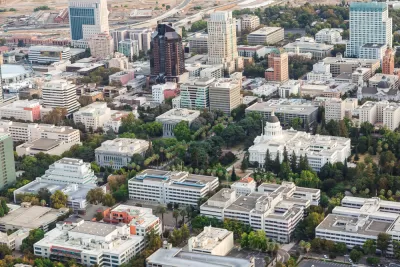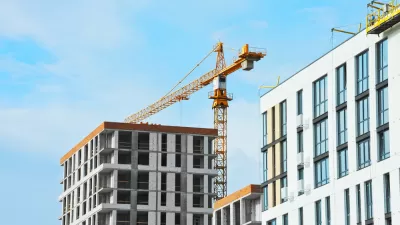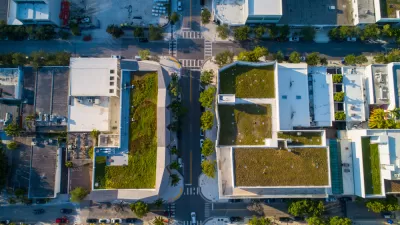California’s Building Code accomplished a first-in-the-nation step to mitigate carbon emissions from the construction and maintenance of buildings, by limiting embodied carbon in some commercial and school buildings.

[Updated August 15, 2023] The California Building Standards Commission (CBSC) and the Division of the State Architect (DSA) recently adopted new building codes that set a new standard in the United States.
According to a press release from the AIA California, California is now the first state set general code standards “to limit embodied carbon emissions in the construction, remodel, or adaptive reuse of commercial buildings larger than 100,000 sq feet and school projects over 50,000 sq ft.”
“In making these changes, California becomes the first state in the nation to set general code standards that require the reduction of embodied carbon emissions in the design and building process applicable to both commercial buildings and schools,” adds the press release.
An article by Dan Roche for the Architect’s Newspaper adds additional insight into the accomplishment, explain that “embodied carbon refers to greenhouse gas emissions that emerge from building materials over their entire life cycle, this includes in manufacturing, transport, installation, upkeep, disassembly, and discarding.”
Representatives from AIA California first proposed the code changes in 2019, reports Roche.
“California follows Norway’s lead which has become a thought leader in embodied carbon discourse. FutureBuilt, a pilot program sponsored by the Norwegian government, is committed to cutting the country’s embodied carbon emissions in half,” adds Roche.
FULL STORY: California becomes the first state in the U.S. to tackle embodied carbon in its energy codes

Trump Administration Could Effectively End Housing Voucher Program
Federal officials are eyeing major cuts to the Section 8 program that helps millions of low-income households pay rent.

Planetizen Federal Action Tracker
A weekly monitor of how Trump’s orders and actions are impacting planners and planning in America.

Ken Jennings Launches Transit Web Series
The Jeopardy champ wants you to ride public transit.

Opinion: Transit Agencies Must View Service Cuts as Last Resort
Reducing service could cripple transit systems by pushing more riders to consider car ownership, making future recovery even less certain.

‘Smart Surfaces’ Policy Guide Offers Advice for Building and Maintaining Urban Tree Canopies
Healthy, robust tree canopies can reduce the impacts of extreme heat and improve air quality.

New Jersey Lawsuit Targets Rent-Setting Algorithms
The state of New Jersey is taking legal action against landlords and companies that engage in what the state’s Attorney General alleges is illegal rent fixing.
Urban Design for Planners 1: Software Tools
This six-course series explores essential urban design concepts using open source software and equips planners with the tools they need to participate fully in the urban design process.
Planning for Universal Design
Learn the tools for implementing Universal Design in planning regulations.
Heyer Gruel & Associates PA
Ada County Highway District
Institute for Housing and Urban Development Studies (IHS)
City of Grandview
Harvard GSD Executive Education
Toledo-Lucas County Plan Commissions
Salt Lake City
NYU Wagner Graduate School of Public Service





























